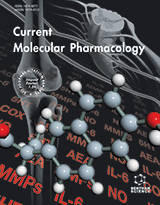Abstract
Airway epithelium (AE) lines the conducting airways of the respiratory system and functions to maintain airway integrity by providing both a physical barrier to inhaled noxious agents and a mechanism for their clearance via the mucociliary escalator. Normal AE cells are relatively refractory to a number of apoptotic stimuli and survival mechanisms are in place to maintain the integrity of the epithelial barrier that is exposed to agents such as reactive oxygen species (ROS) and death receptor ligands secreted by immune cells during inflammation. When damage to AE does occur, there is increased AE apoptosis, such as in the airway damage that occurs in the chronically inflamed airways in diseases like asthma where rates of AE apoptosis can be increased many-fold. The usual treatment for persistent asthma in humans involves a combination of bronchodilator and inhaled corticosteroid; there is however a need to develop strategies to better control other aspects of the disease, including minimizing the ongoing damage to AE and consequent airway remodeling. Targeting of the major apoptosis-regulatory factors in AE may be one such strategy. Here we review what is known about apoptosis and its regulatory factors in normal AE and abnormalities in these factors in the inflamed airways of mice and humans.
Keywords: Airway epithelium, Apoptosis, Necrosis, Airway damage, Inflammation, Asthma, Caspases, Therapy
Current Molecular Pharmacology
Title: Apoptosis-Regulatory Factors as Potential Drug Targets in the Epithelium of Normal and Inflamed Airways
Volume: 1
Author(s): P. D. Zalewski and R. E. Ruffin
Affiliation:
Keywords: Airway epithelium, Apoptosis, Necrosis, Airway damage, Inflammation, Asthma, Caspases, Therapy
Abstract: Airway epithelium (AE) lines the conducting airways of the respiratory system and functions to maintain airway integrity by providing both a physical barrier to inhaled noxious agents and a mechanism for their clearance via the mucociliary escalator. Normal AE cells are relatively refractory to a number of apoptotic stimuli and survival mechanisms are in place to maintain the integrity of the epithelial barrier that is exposed to agents such as reactive oxygen species (ROS) and death receptor ligands secreted by immune cells during inflammation. When damage to AE does occur, there is increased AE apoptosis, such as in the airway damage that occurs in the chronically inflamed airways in diseases like asthma where rates of AE apoptosis can be increased many-fold. The usual treatment for persistent asthma in humans involves a combination of bronchodilator and inhaled corticosteroid; there is however a need to develop strategies to better control other aspects of the disease, including minimizing the ongoing damage to AE and consequent airway remodeling. Targeting of the major apoptosis-regulatory factors in AE may be one such strategy. Here we review what is known about apoptosis and its regulatory factors in normal AE and abnormalities in these factors in the inflamed airways of mice and humans.
Export Options
About this article
Cite this article as:
Zalewski D. P. and Ruffin E. R., Apoptosis-Regulatory Factors as Potential Drug Targets in the Epithelium of Normal and Inflamed Airways, Current Molecular Pharmacology 2008; 1 (1) . https://dx.doi.org/10.2174/1874467210801010038
| DOI https://dx.doi.org/10.2174/1874467210801010038 |
Print ISSN 1874-4672 |
| Publisher Name Bentham Science Publisher |
Online ISSN 1874-4702 |
 16
16
- Author Guidelines
- Bentham Author Support Services (BASS)
- Graphical Abstracts
- Fabricating and Stating False Information
- Research Misconduct
- Post Publication Discussions and Corrections
- Publishing Ethics and Rectitude
- Increase Visibility of Your Article
- Archiving Policies
- Peer Review Workflow
- Order Your Article Before Print
- Promote Your Article
- Manuscript Transfer Facility
- Editorial Policies
- Allegations from Whistleblowers
- Announcements
Related Articles
-
Solid-Phase and Microwave-Assisted Syntheses of 2,5-Diketopiperazines:Small Molecules with Great Potential
Combinatorial Chemistry & High Throughput Screening Ocular Application of Macrobiomolecules in Anti-Allergy and Anti- Inflammation
Current Medicinal Chemistry - Anti-Inflammatory & Anti-Allergy Agents Lipoxygenases (LOs): An Heterogenous Family of Lipid Peroxidizing Enzymes Implicated in Cell Differentiation, Inflammation, Asthma, Carcinogenesis, Atherogenesis-An Interesting Target for the Development of Promising Drugs
Current Enzyme Inhibition Chitinases: Biomarkers for Human Diseases
Protein & Peptide Letters Lung Volume Reduction in Patients with COPD: Physiological and Clinical Implications
Current Respiratory Medicine Reviews Significance of P2X7 Receptor Variants to Human Health and Disease
Recent Patents on DNA & Gene Sequences Free Radicals and Antioxidants: How to Reestablish Redox Homeostasis in Chronic Diseases?
Current Medicinal Chemistry Novel Anti-Platelets in Stable Coronary Artery Disease
Current Pharmaceutical Design Evidence of Probiotics in Prevention of Allergy and Asthma
Current Drug Targets - Inflammation & Allergy Substructural Analysis in Drug Discovery
Current Computer-Aided Drug Design Neuropeptide Mimetics and Antagonists in the Treatment of Inflammatory Disease: Focus on VIP and PACAP
Current Topics in Medicinal Chemistry Metal-Based Antimicrobial Protease Inhibitors
Current Medicinal Chemistry Volatilome Metabolomics and Databases, Recent Advances and Needs
Current Metabolomics Label-Free Cell Phenotypic Drug Discovery
Combinatorial Chemistry & High Throughput Screening Targeting Mitogen-Activated Protein Kinases for Asthma
Current Drug Targets Endogenous Acetylcholine Controls the Severity of Polymicrobial Sepsisassociated Inflammatory Response in Mice
Current Neurovascular Research Chronopharmacokinetic Evaluation of Budesonide Multiparticulate Systems
Recent Patents on Drug Delivery & Formulation Novel Biological Therapies in Severe Asthma: Targeting the Right Trait
Current Medicinal Chemistry Recent Trends in Nanotechnology-Based Drugs and Formulations for Targeted Therapeutic Delivery
Recent Patents on Inflammation & Allergy Drug Discovery Pin1: A New Outlook in Alzheimers Disease
Current Alzheimer Research


























